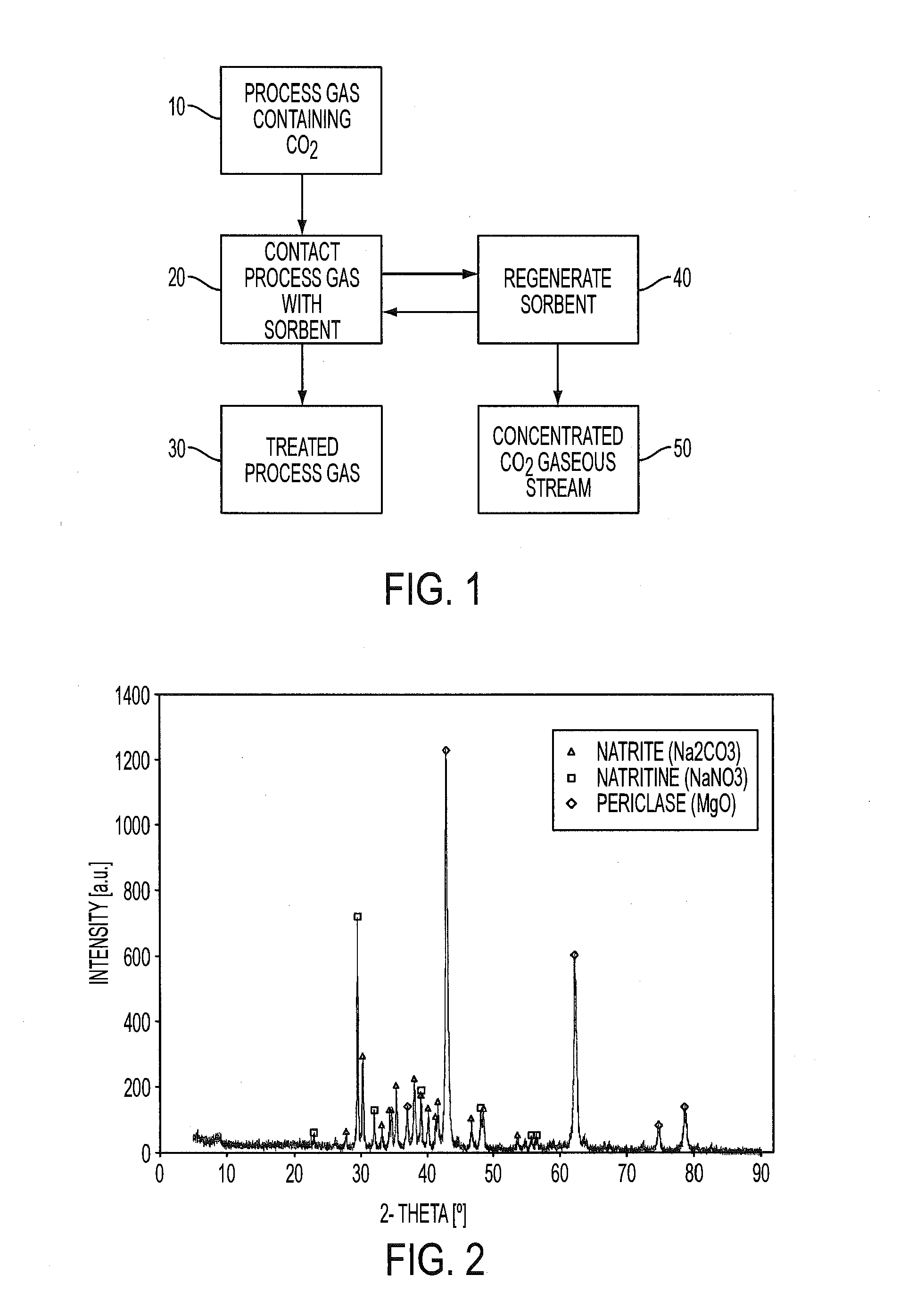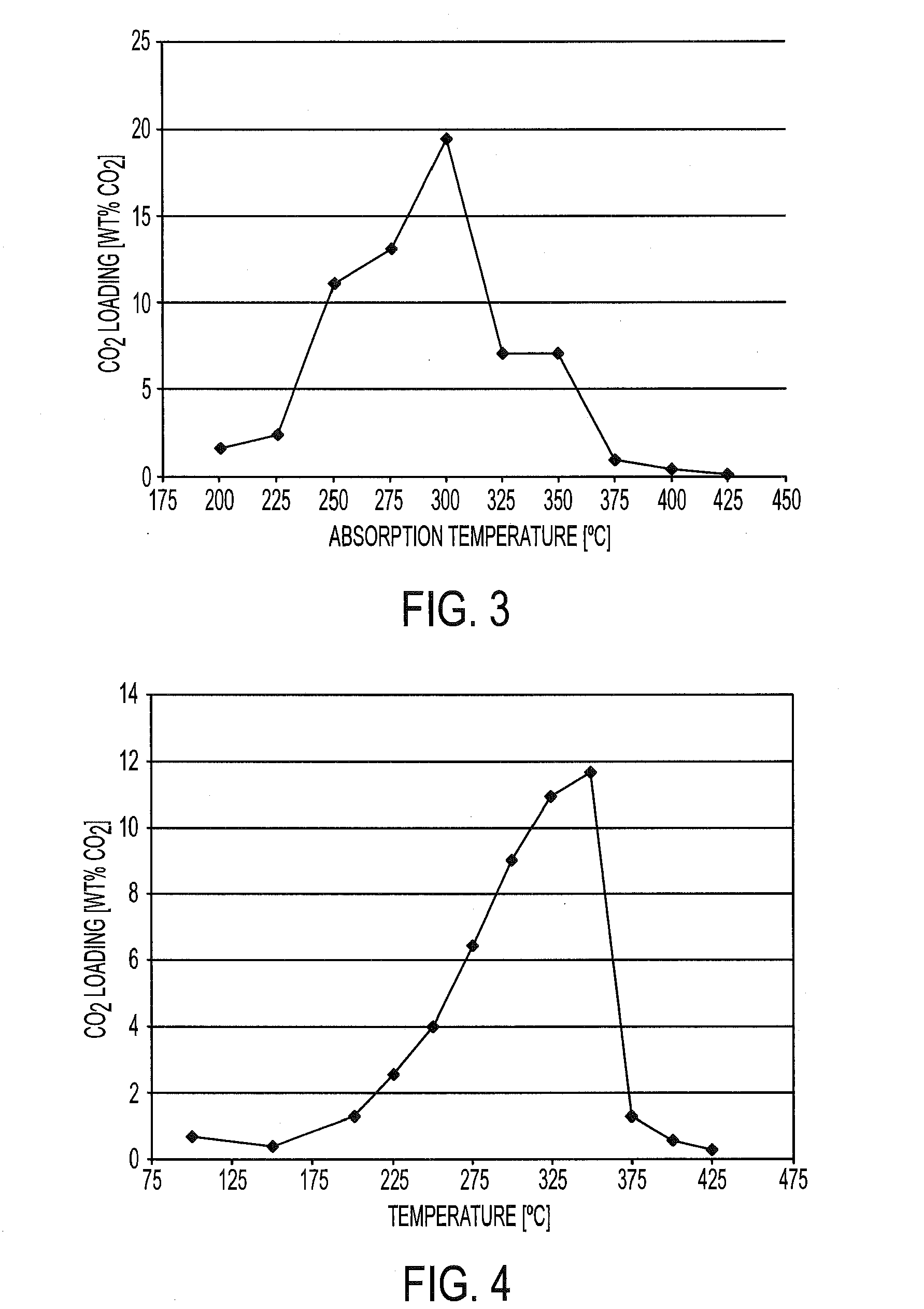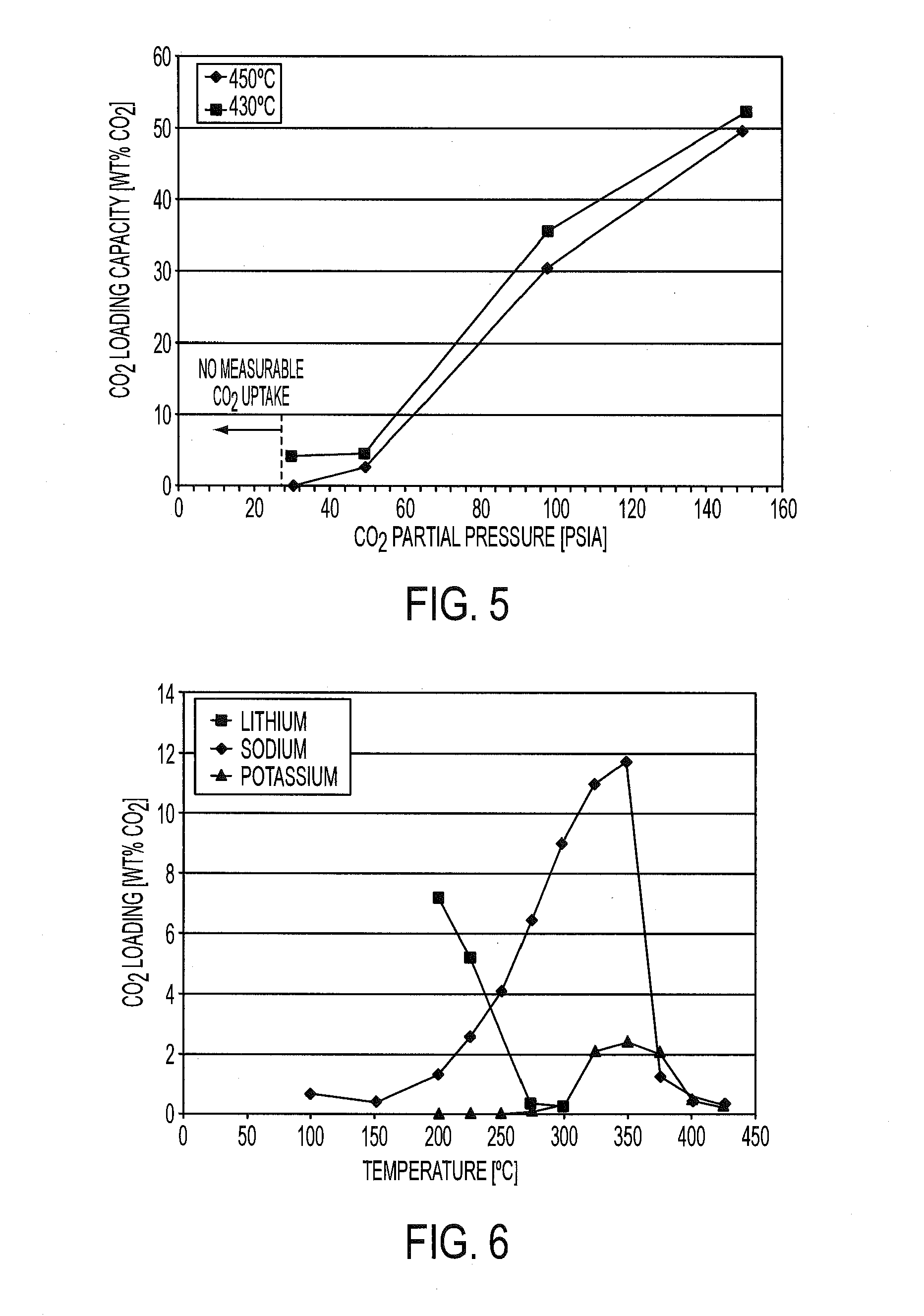Regenerable sorbent for carbon dioxide removal
a sorbent and carbon dioxide technology, applied in the field of sorbent material regenerable solids, can solve the problems of increasing the concentration of carbon dioxide, reducing the solubility of sorbent, and reducing the growth of atmospheric co2 /sub>concentrations, etc., to achieve the highest co2 loading, the effect of increasing the co2 loading and limiting the solubility
- Summary
- Abstract
- Description
- Claims
- Application Information
AI Technical Summary
Benefits of technology
Problems solved by technology
Method used
Image
Examples
example 1
Sorbent Prepared by Gelation
[0065]A sorbent comprising MgO:Na2CO3:NaNO3 at a mass ratio of 75.8:16:8.2 was prepared as follows. An amount (395 g) of magnesium carbonate hydroxide (4MgCO3.Mg(OH)2×H2O) was added to 800 ml of a solution of sodium carbonate (42.18 g) and sodium nitrate (21.63 g) dissolved in deionized water. The resulting mixed salt colloid was stirred for 30 minutes, covered, and allowed to sit overnight (up to 16 hours) at ambient temperature. Thereafter, the colloid was dried in an oven at 120° C. overnight (up to 16 hours) to form a dry cake.
[0066]The dry cake was then calcined by heating from 120° C. to 450° C., at a ramp rate of 3° C. / minute, followed by holding at a temperature of 450° C. for 4 hours. The calcined cake was crushed and sieved to collect a 150-425 mesh fraction.
example 2
Sorbent Prepared by Co-Precipitation
[0067]A magnesium-sodium mixed salt sorbent was prepared by precipitating a solid from two starting solutions. A first solution containing 233.4 g of Na2CO3 dissolved in 3000 ml deionized water was placed in a 5.0 liter plastic beaker, and stirred vigorously with a mechanical agitator. A second solution of 188.4 g Mg(NO3)2:6H2O in 500 ml of deionized water was pumped into the first solution at a rate of approximately 30 ml / minute. The resulting slurry was stirred for an hour and then covered and stored overnight under ambient conditions. Thereafter, the slurry was filtered using a vacuum-assisted Buchner funnel assembly to collect a wet precipitate cake. About 3200 ml of filtrate was collected and then dried in an oven at 120° C. for 24 hours to form a dry cake. The dried cake was then calcined, crushed and sieved as described in Example 1. A combination of inductively coupled plasma (ICP) analysis and elemental analysis (CHONS) was used to determ...
example 3
Carbon Dioxide Loading of Sorbent of Example 1
[0068]The amount of CO2 loaded on the sorbent of Example 1 was evaluated using a simulated exhaust gas consisting of 13% CO2, 13% H2O, and balance N2 (i.e., an exhaust gas with a CO2 partial pressure of 1.9 psia) using a conventional, packed-bed reactor system equipped with a Horiba NDIR CO2 analyzer to measure the concentration of CO2 in the gas entering and exiting the reactor. The packed-bed reactor was loaded with 6 g of the prepared sorbent of Example 1 and a quantity of an inert, silicon carbide (SiC), to occupy the additional reactor volume. The reactor was then heated to 450° C. at 10° C. / min in flowing N2 to activate the sorbent and was held at this temperature until the CO2 concentration in the reactor effluent dropped below 0.1%. The reactor was cooled to the lowest absorption temperature in flowing N2. Once the reactor stabilized at the desired absorption temperature, the composition of the simulated feed gas (13% CO2, 13% H2...
PUM
| Property | Measurement | Unit |
|---|---|---|
| temperature | aaaaa | aaaaa |
| temperature | aaaaa | aaaaa |
| temperature | aaaaa | aaaaa |
Abstract
Description
Claims
Application Information
 Login to View More
Login to View More - R&D
- Intellectual Property
- Life Sciences
- Materials
- Tech Scout
- Unparalleled Data Quality
- Higher Quality Content
- 60% Fewer Hallucinations
Browse by: Latest US Patents, China's latest patents, Technical Efficacy Thesaurus, Application Domain, Technology Topic, Popular Technical Reports.
© 2025 PatSnap. All rights reserved.Legal|Privacy policy|Modern Slavery Act Transparency Statement|Sitemap|About US| Contact US: help@patsnap.com



